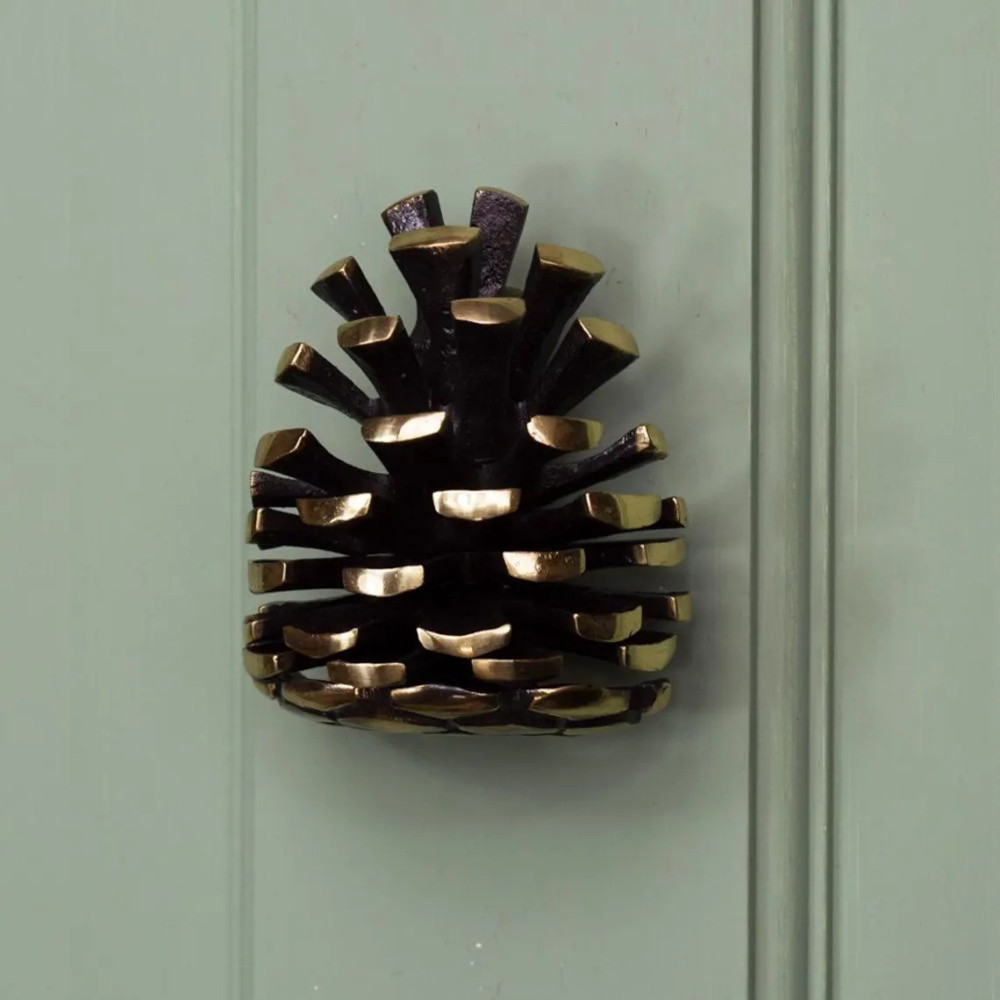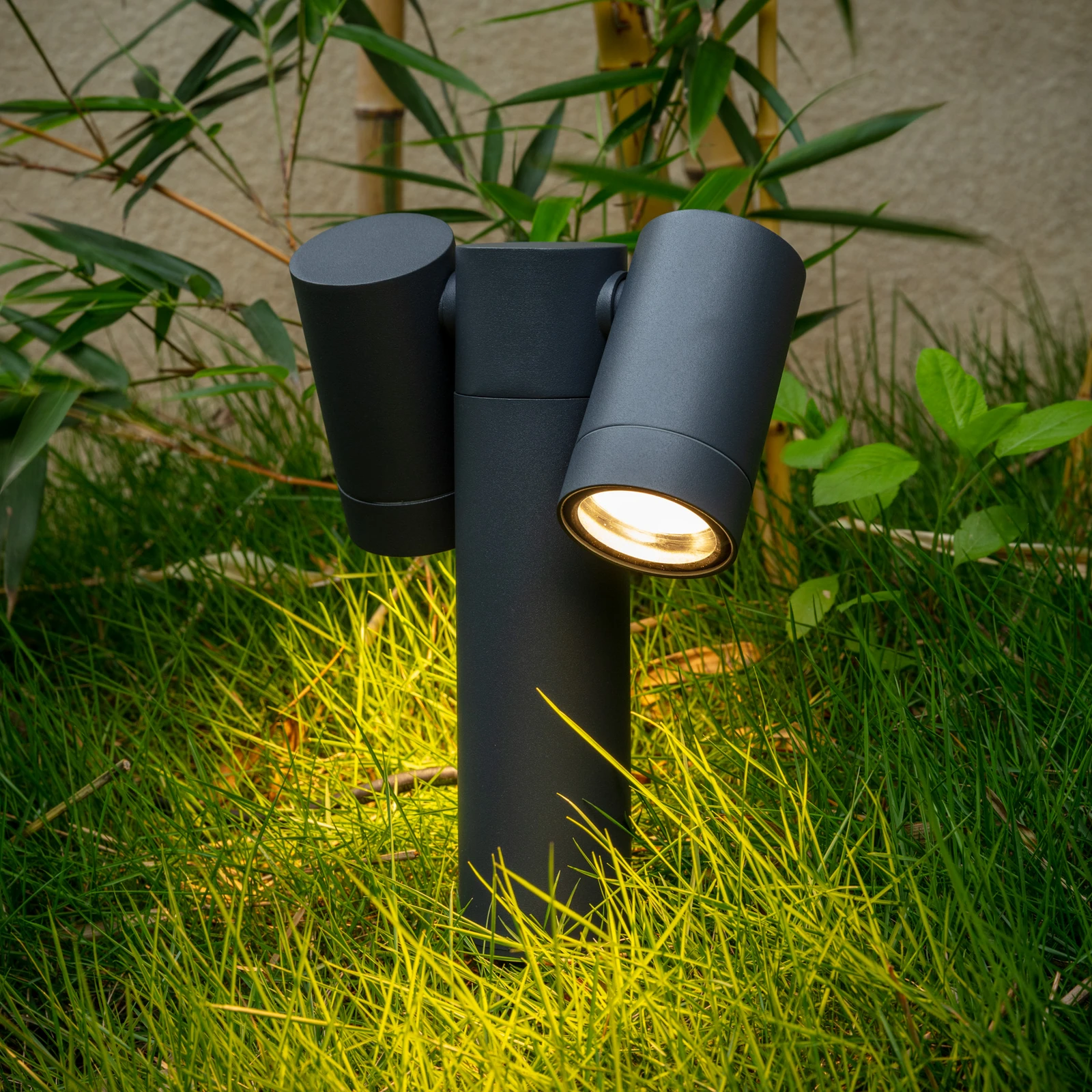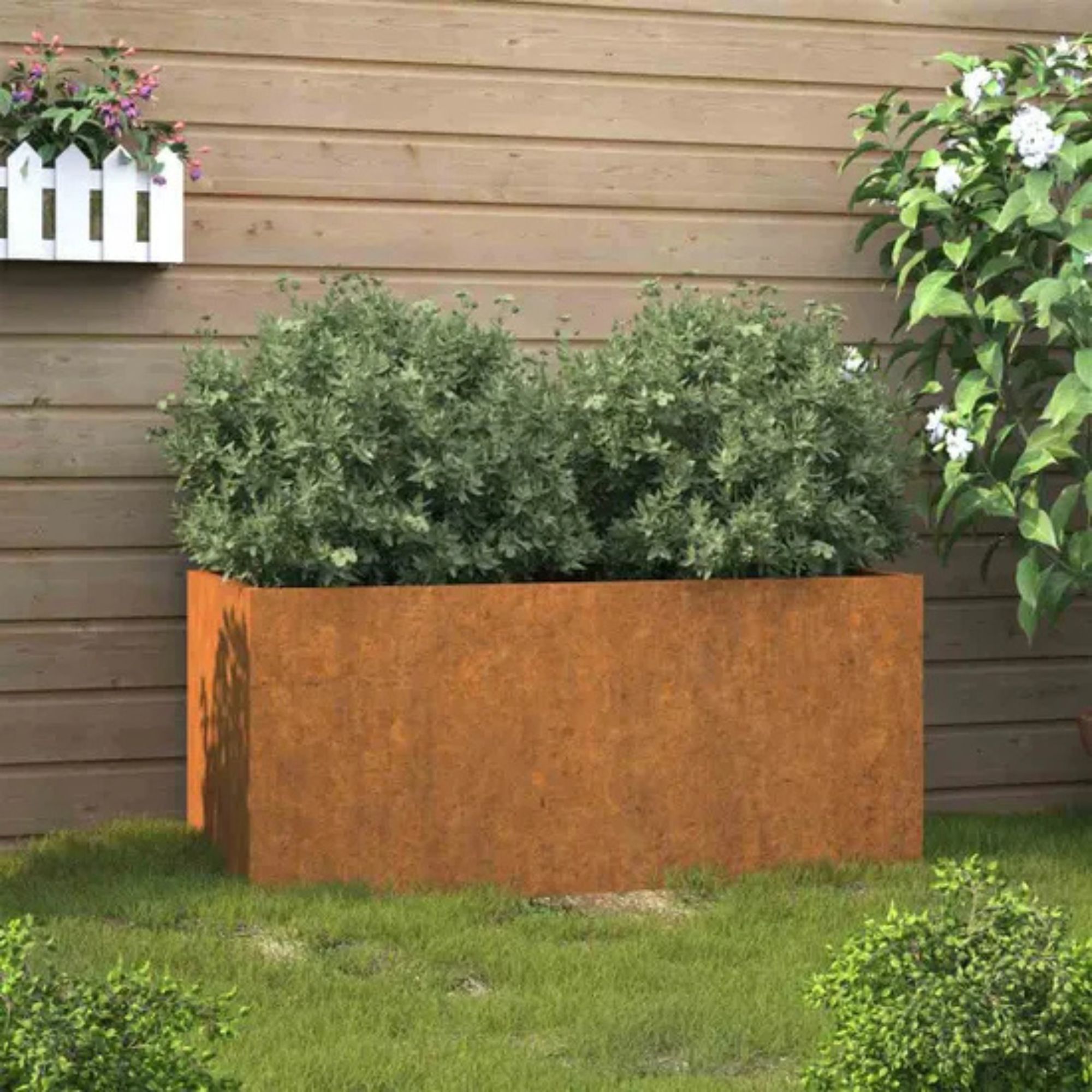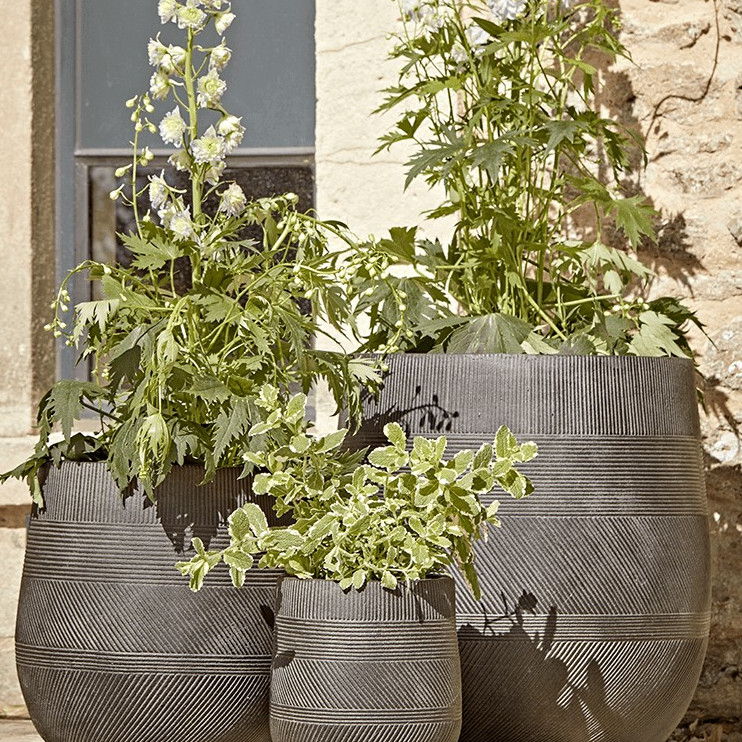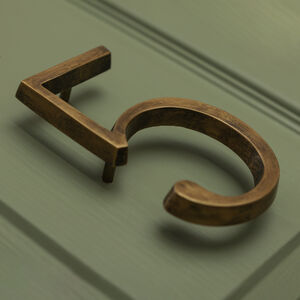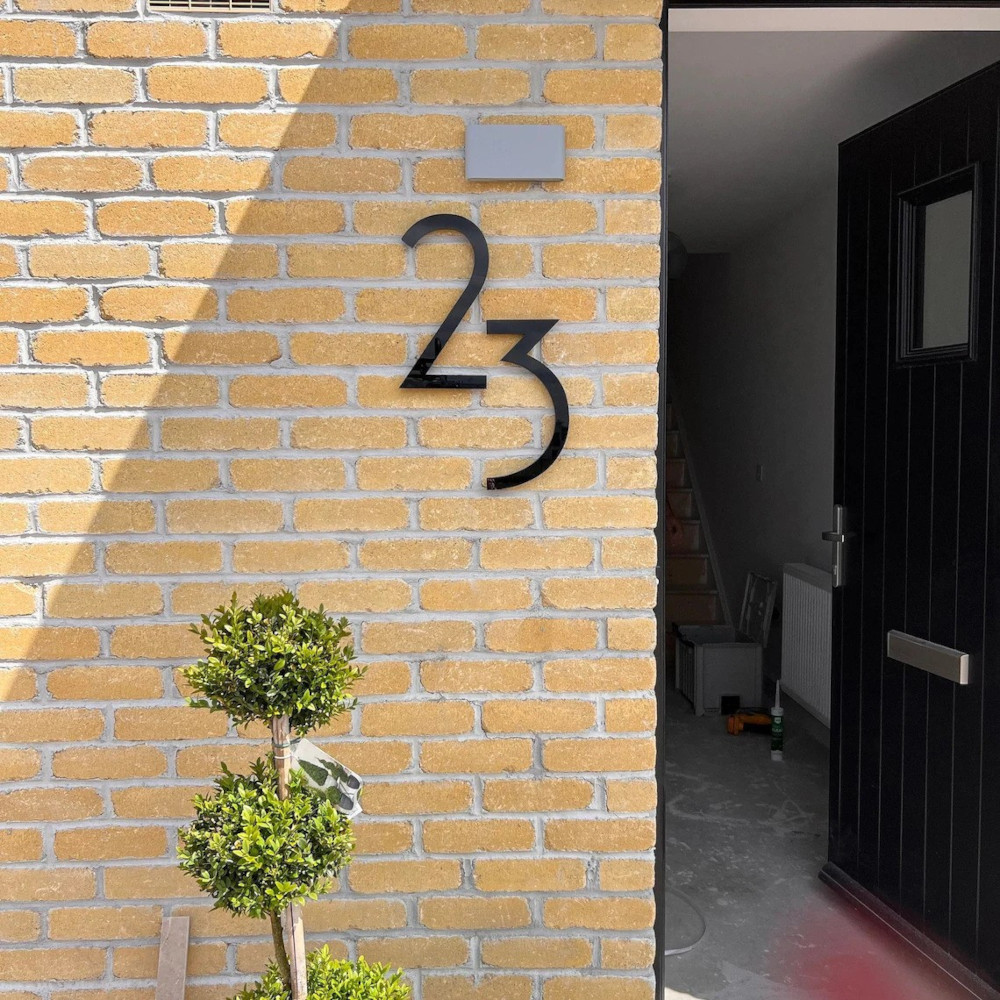15 ways to add kerb appeal to your home – experts share what really works for a stylish first impression
Make your home's exterior pop with these ideas

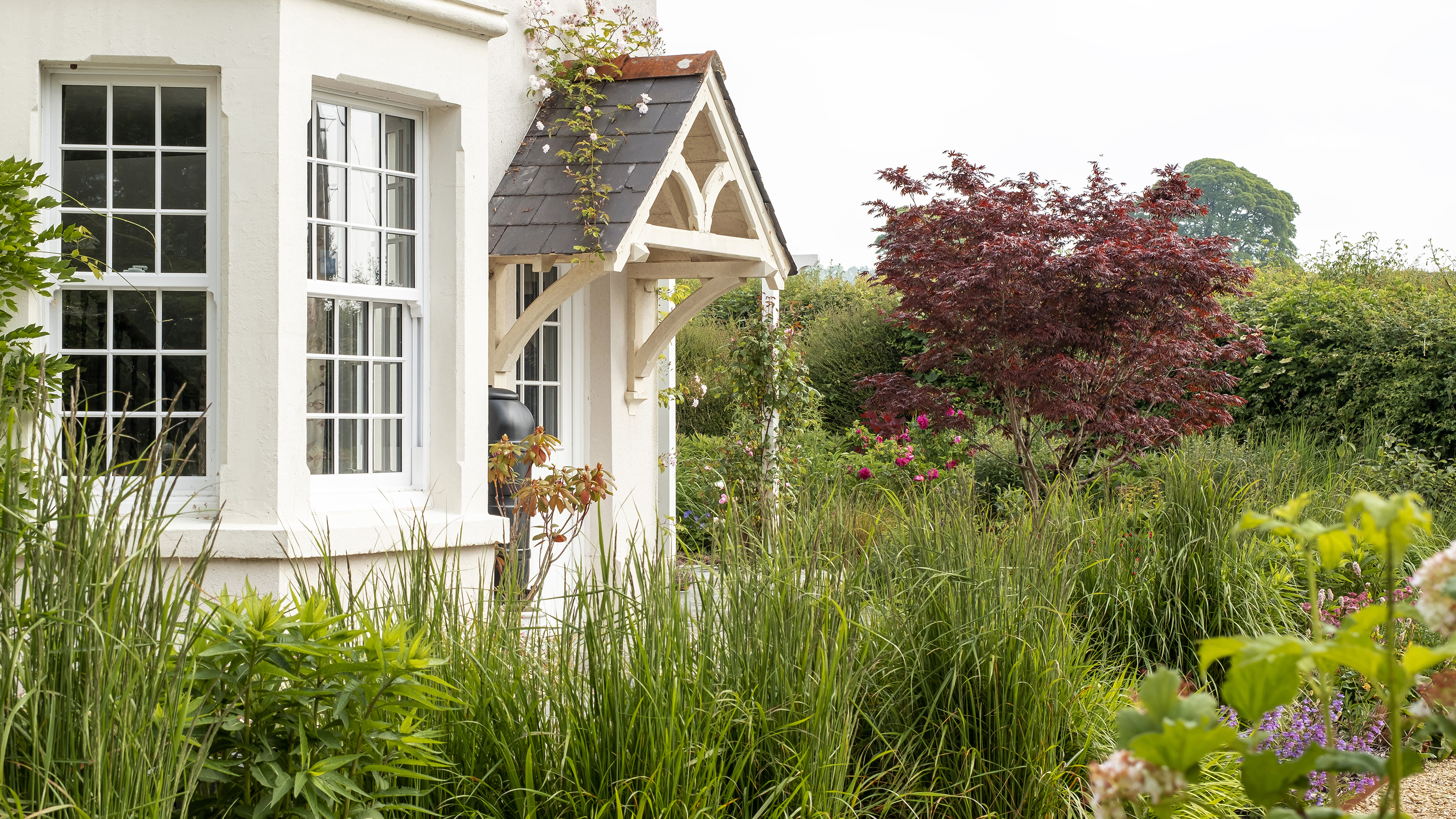
When it comes to kerb appeal, a good front entrance can make or break the facade of your house. First impressions really do count, and nowhere is that truer than when someone glimpses your house from the street.
From a fresh new front door colour idea, replete with new door furniture, to stylish outdoor lighting, there are lots of simple tweaks and upgrades that can transform the look and feel of your home.
So whether you're looking to sell or simply want to give your exterior a glow up, boosting your kerb appeal is a great place to start, so we asked the experts for their tips and tricks.
1. Upgrade your key door furniture
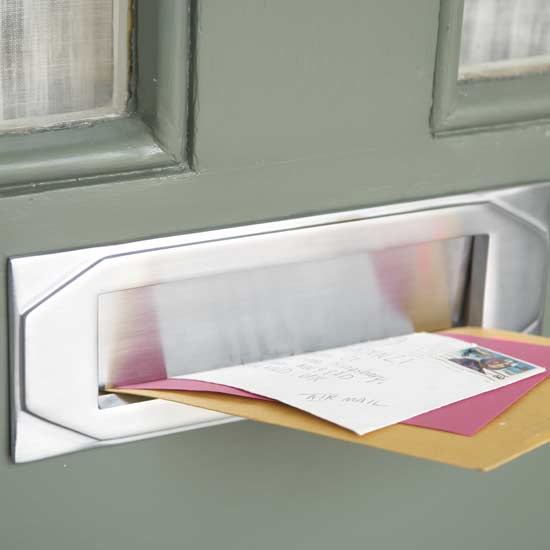
The conventional lion knocker in brass still cuts a dash on period doors, but something a little different, look to companies who create more sculptural shapes as striking as a piece of beautiful jewellery, like Cox and Cox.
'A small accent that makes a major impact on any room in the house, even the front door,' says Paul Clifford, managing director of architectural hardware company Croft.
'The difference in finish can change the entire character of the door and how people see your home, so ensure you choose a quality-made product, as this is essentially the first thing your guests see before entering your home.'
Hiatt Hardware has a great range of door knob designs. Alternatively, go for a door handle. They're available on a rectangular back plate or on a rose (a circular back plate), and also in pairs for the door's exterior and interior. Head to the Door Handle Company to browse its range; our guide to how to fit a door handle has all the expert advice you will need to install it yourself.
Sign up to our newsletter for style inspiration, real homes, project and garden advice and shopping know-how
A letter plate can be a horizontal slot in the centre of the door or a vertical letter plate like this brass version from Amazon in the doorframe. If your front door has a mortise lock (a lock set into the door that can be locked and unlocked on both sides), you can smarten it up with an escutcheon (a shield that fits over the keyhole), which you can pick up easily at B&Q.
While in search of the perfect knocker, you can pick up unique pieces from the likes of Etsy, Not on the High Street and even eBay.
Shop unique door knockers
2. Consider your external lighting
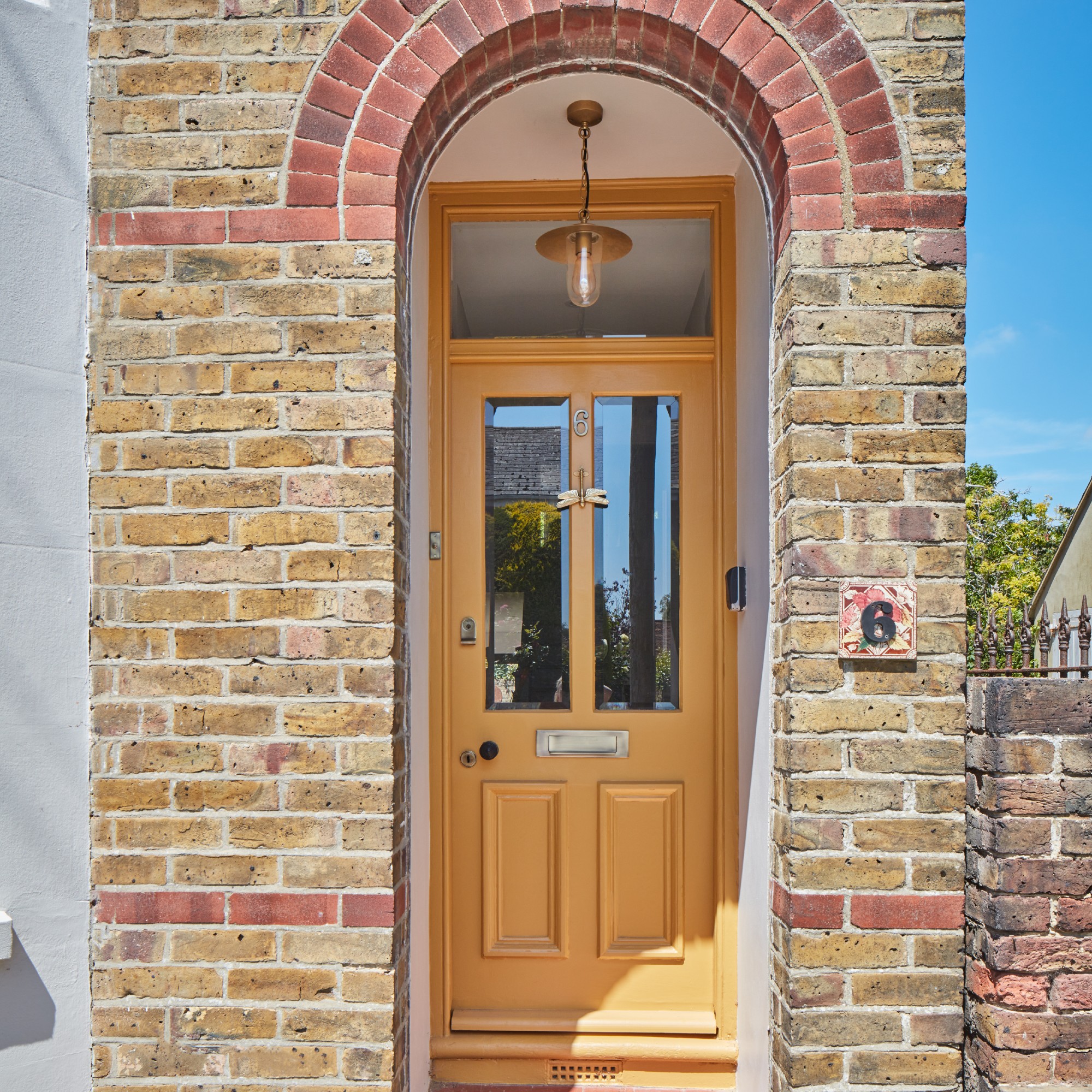
Less is more when it comes to external lights. Sanjit Bahra of Design Plus Light offers his top tips for effective outdoor lighting.
'Lighting should direct you to the front door safely with steps and changes well illuminated,' Sanjit says. 'My favourites are low-glare step lights, ideally angled downwards or with a half shield to reduce any stray light.'
'I like to include a downlight in a porch to illuminate the front door; it picks out ironmongery and is the best way to light a door. You can then dim decorative wall lights to look beautiful. Lighting can also direct you away from areas where you don't want people to go; so what you don't light is just as important.'
'Aim for a low glare; at night, you want the eye to be drawn comfortably along a lit path and to the front door. Be careful to position spike (garden) lights out of sight lines so that planting is lit without glare. Make sure that step lights are shielded so that the light is directed onto the steps.'
'Finally, ensure the lighting is properly controlled for no wastage; you can add it to the control system for the rest of the house or simply have it linked to a timer. If you do opt for security floodlights make sure you can turn them off when not needed.'
Shop our outdoor light picks
3. Paint your front door

Sarah Cole from Farrow & Ball gives tips on how to choose the perfect colour for your door. 'When choosing a front door colour it's not only important to look at the other colours in your area but to also consider the age of the property as colour can look and feel different in urban or rural settings.'
'One rule of thumb is to tone your front door with the walls of your house; use stronger colours with brick and stone and lighter colours with painted masonry. For example, a Green Smoke front door will complement a red brick house, while neutrals like Stony Ground work well with stone facades.'
'Classic colours such as black and red are incredibly popular for front doors: try Off-Black or Incarnadine to create a stylish entrance. Darker colours such as Brinjal, Studio Green and Drawing Room Blue also work to great effect on front doors and are brilliant for making yours unique.'
'To really create a personal stamp, be bold and try using bright colours like Yellowcake, St Giles Blue or Charlotte's Locks. The ever-expanding palette of external paint colours and finishes allows you to create visual links between the door and facade.'
On a similar note, Yolande Hesse of Back to Front Architects says, ‘Avoid blacks or dark grey paints on south-facing front doors, as the colour retains the heat, causing the wood to literally boil and crack.'
4. Replace your front door
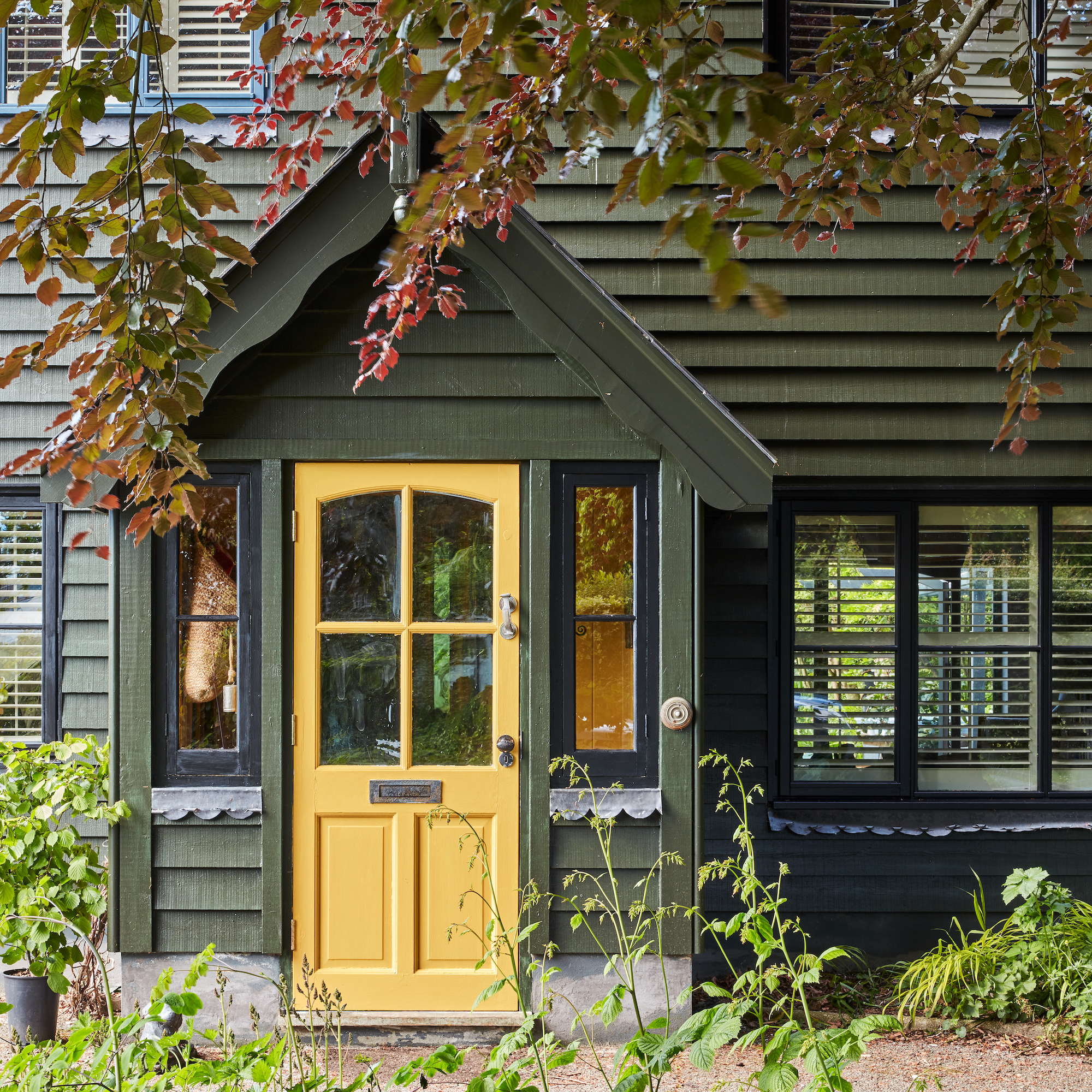
For interior designers such as Monique Tollgard, the front door is a prelude for the style that lies within. The entrance is the first encounter for you, your guests and your home. The materials and colours we use allow us to introduce the "red thread" or guiding motif of the house immediately.'
'The front door can say so much about the owner: it can be relaxed and welcoming or more formal,' agrees fellow interior designer Karen Howes of Taylor Howes. ‘For us, the front door is so important; it is the start of the story, and first and last impressions are so important.'
There are several essential factors to consider when choosing this all-important centrepiece. For security and durability, Accoya (a softwood door with the robust properties of a hardwood) and oak are popular choices for front doors.
Traditional door specialists like Direct Doors will produce doors to match the period of your home, or if you're not looking for bespoke, you could opt for period-inspired or a more modern style instead from the likes of B&Q, Wickes and Door Superstore.
5. Tame your lawn
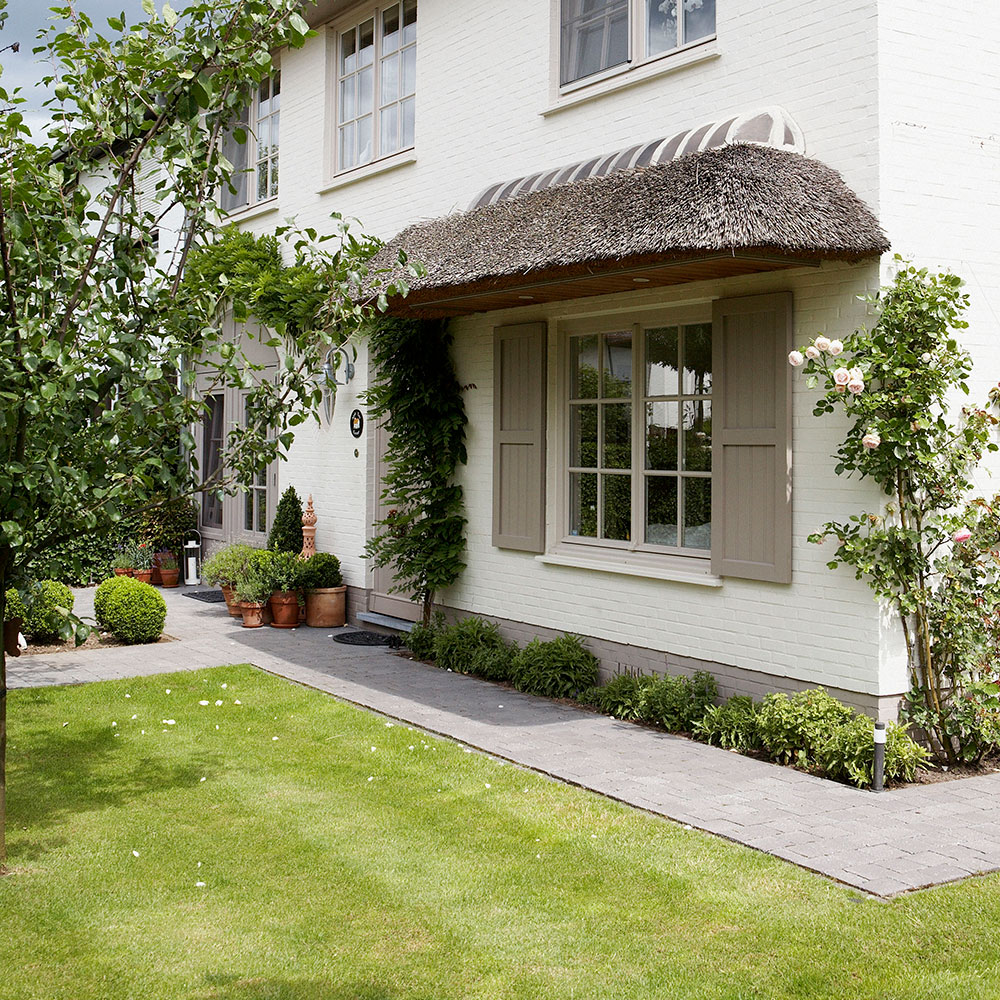
It's always worth making the most of your bonus garden space with a winning front garden idea. If you’re lucky enough to have a front garden, make sure the lawn is tidy.
It doesn't need to be a golf-course green, but defined edges with a good grass strimmer, a healthy hue and the absence of overgrown patches will be inviting. Check out our top lawn care tips to make the most of yours.
'Remove any weeds, trim the hedges, cut the grass, wash down patios or decking, and brush away cobwebs. Just keeping an eye on the overall tidiness of the front of your home can make a huge difference to your kerb appeal,' explains co-founder of Compare My Move, Dave Sayce.
'A well-kept lawn, flower beds, bushes along the walls or front door, or even hanging plants on the porch can all add a splash of colour and life. They also help soften harsh lines, like the edges of walls or driveways, making the whole exterior feel more welcoming and balanced,' he adds.

Co-founder and Managing Director of Compare My Move, Dave Sayce, started a removal company years ago and then realised there was a gap in the market for a comparison site to help with people moving home.
Compare My Move helps you compare verified and trusted conveyancers, chartered surveyors, removal, storage and house clearance companies to help you save money on your house move.
6. Perfect your planting
'If there’s no front garden, using hanging baskets, window boxes or statement planters on either side of the door adds a lush, welcoming feel,' explains Liv Conlon, interiors expert who runs ThePropertyStagers.co.uk.
'Potted plants or plants in hanging baskets will create a warm welcome,' suggests Sam Stevens, garden design expert at Pergolux UK. One statement hanging basket like this terracotta hanging post from Dunelm by the door will look just right.
‘For planting, aim for one striking planter and avoid lots of smaller pots. Tall shallow window boxes look smarter than smaller ones,' she says. And these low-maintenance plants for pots are ideal.
At Helen Green Design, Natalia Miyar favours ‘Matching metallic planters with metalwork on the front of the house to tie all the elements together.' Don't forget the practical elements, too, like bike stands or bin shelters (this bin shelter from B&Q gets our vote), ideally painted to blend in with the setting.

Interiors expert Liv Conlon runs ThePropertyStagers.co.uk, staging 400 homes across the UK every year, and StagerBoss, teaching women how to launch their own property staging brand.
Shop our plant pot picks
7. Build on a porch

A well-designed porch idea should be both aesthetic and practical, framing the front door while providing shelter, light and the promise of a warm hallway. Yolande from Back to Front Architects singles out some key points to bear in mind when designing a porch.
A common mistake when designing porches is to simply echo the roof pitch. If your roof line is not attractive then aim for a simpler, less obtrusive porch design to detract from the roof above.
Porches which are larger than 3m by 3 metres will require planning as they fall outside the permitted development rules. If you don't have a back door, then try to factor in practical space for boots and scrapers in your porch design.
8. Freshen up your home's exterior masonry

If your once-white home is now looking decidedly greyer and looks a little worse for wear, it may be time to don the overalls or call in the painters because nothing transforms a home's look than a fresh coat of exterior paint.
Rendered or pebble-dash facades can look tired over time especially if there are signs of cracks, peeling and faded colour, so a lick of paint will help lift the exterior of your home with a winning exterior colour idea.
Opt for a classic off-white like Pointing from Farrow & Ball, be bolder with a statement shade or highlight architectural features with contrasting borders.
Or, if you're tackling a brick or stone front, over time, dirt, grime, and pollutants can accumulate, so a good cleaning might be in order instead. Consider safely pressure washing any discoloured bricks on a very low setting.
9. Check and repair any damage
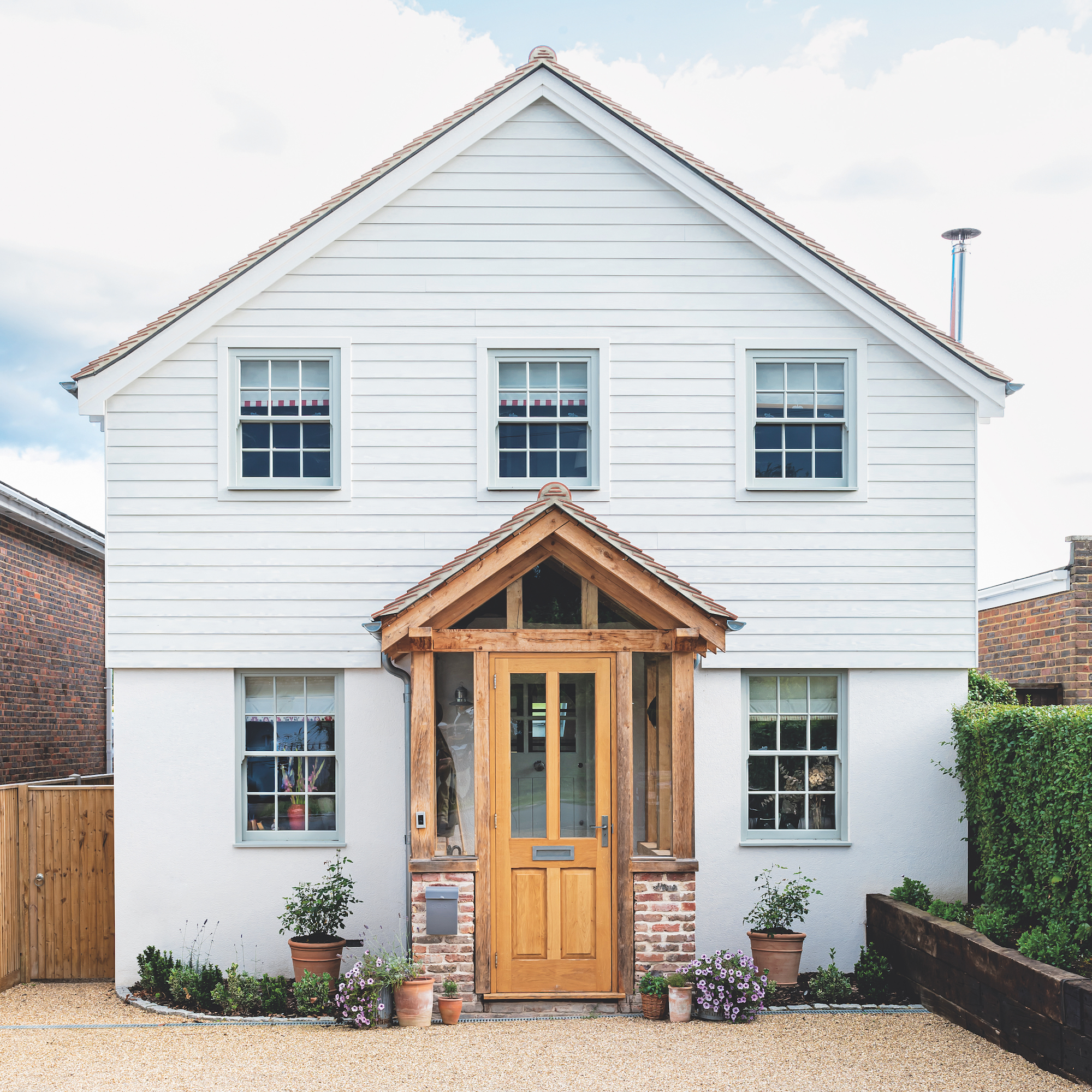
Beyond the aesthetics, though, regular maintenance of your exterior masonry can prevent damage, such as cracks or deterioration, which could lead to costly repairs if left unchecked.
'Depending on the material, you should repaint your home every 5 to 10 years. It’s also a smart move to give it a fresh coat just before selling. It helps your home look well-maintained and more inviting to potential buyers,' explains Dave from Compare My Move.
'If you notice cracks or splits in your exterior walls, it could indicate a more serious issue and one that can’t be covered up with a fresh coat of paint. These imperfections can also be a major red flag for potential buyers.'
'It’s best to address the root of the problem by getting a structural survey and taking any necessary repair steps. Not only will this help protect your property’s value, but it will also prevent these issues from dragging down your kerb appeal.'
10. Add or change up your door number
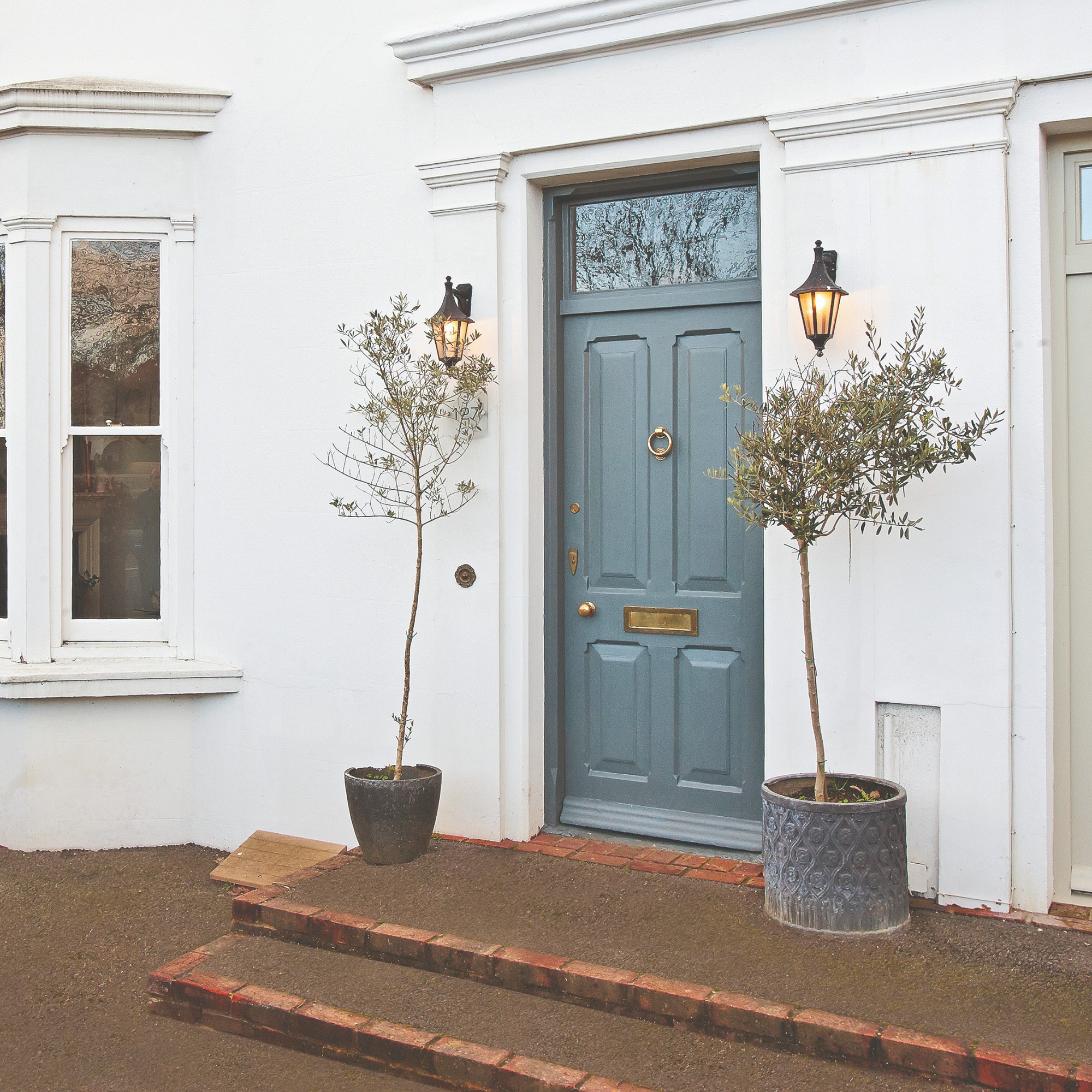
A great first impression is all in the details, and it's a good idea to get them just right. A door number might seem like a small detail, but a visible house number is essential for visitors and deliveries. Even if you already have a decorative name plaque on your wall, a number on the door will still be useful.
'If it’s unclear whether you live at Number 6 or Number 9 because the number is hanging at a jaunty angle, take five minutes to sort it out. It’s also worth upgrading or cleaning house numbers or name plaques,' explains Sam Stevens, garden design expert at Pergolux UK.
So, whether you opt for sleek, modern options or classic gold foil digits on a fanlight, the right door number style can tie together your front door aesthetic and give your home a polished, welcoming feel.
It's a subtle signal, too, that your home is thoughtfully cared for because if you've considered something as simple as a door number, chances are the rest of your home is just as stylishly put together.
Shop our door number picks
11. Fix exterior fittings

Make sure that nothing is obviously broken. Walking through a gate that’s hanging off its hinges, tripping up on a loose paving stone and then having to bang furiously on the door because the doorbell doesn’t work isn’t going to set a great tone... Fixing the little things could make a big difference.
'If your fence is falling down or wall crumbling, see if you can do a DIY repair or get someone in to fix it - the effect will be worth it,' says Liv.
So, think about fixing that broken fence or painting it to give it a new lease on life. And don't forget about repairing paving cracks to really set the scene.
'A well-maintained roof and exterior walls can make a big difference to your kerb appeal. It’s important to regularly check your roof tiles and gutters (especially after storms or bad weather) to spot any damage that may need repairing,' advises Dave from Compare My Move.
'Cleaning your gutters also plays a key role in keeping your home looking its best. Aim to clean them twice a year, in spring and autumn. However, if you live in a windy area or near large trees that shed leaves and debris, it’s a good idea to clean them every three months.'
12. Keep your windows well-presented

Chloe Dacosta, design manager at Blinds 2go makes the case for making sure your windows are presentable to add kerb appeal.
'Well-chosen blinds or shutters create a polished, cohesive look from the outside, adding depth and character to windows and enhancing kerb appeal,' explains Chloe.
'Whether you opt for sleek modern venetian or wooden blinds, or elegant shutters, the right choice can increase both homeliness, but also completeness of your home. Uniform blinds create a tidy, well-maintained appearance that boosts kerb appeal.'
Yvonne Keal, senior product manager at Hillarys, suggests that colourful linings on curtains can be just as effective. 'Coloured linings on curtains are a subtle yet effective way to soften the appearance of your home's exterior.'
'By selecting hues that complement your home's facade, you can create a harmonious and inviting look. These linings not only add a splash of colour visible from the outside but also enhance the interior ambiance by introducing warmth and personality.'
'For a quick fix, make sure your windows are clean, ditch curtains for shutters, and add a window box for a burst of colour,' adds interiors expert Liv Conlon.
13. Improve your driveway
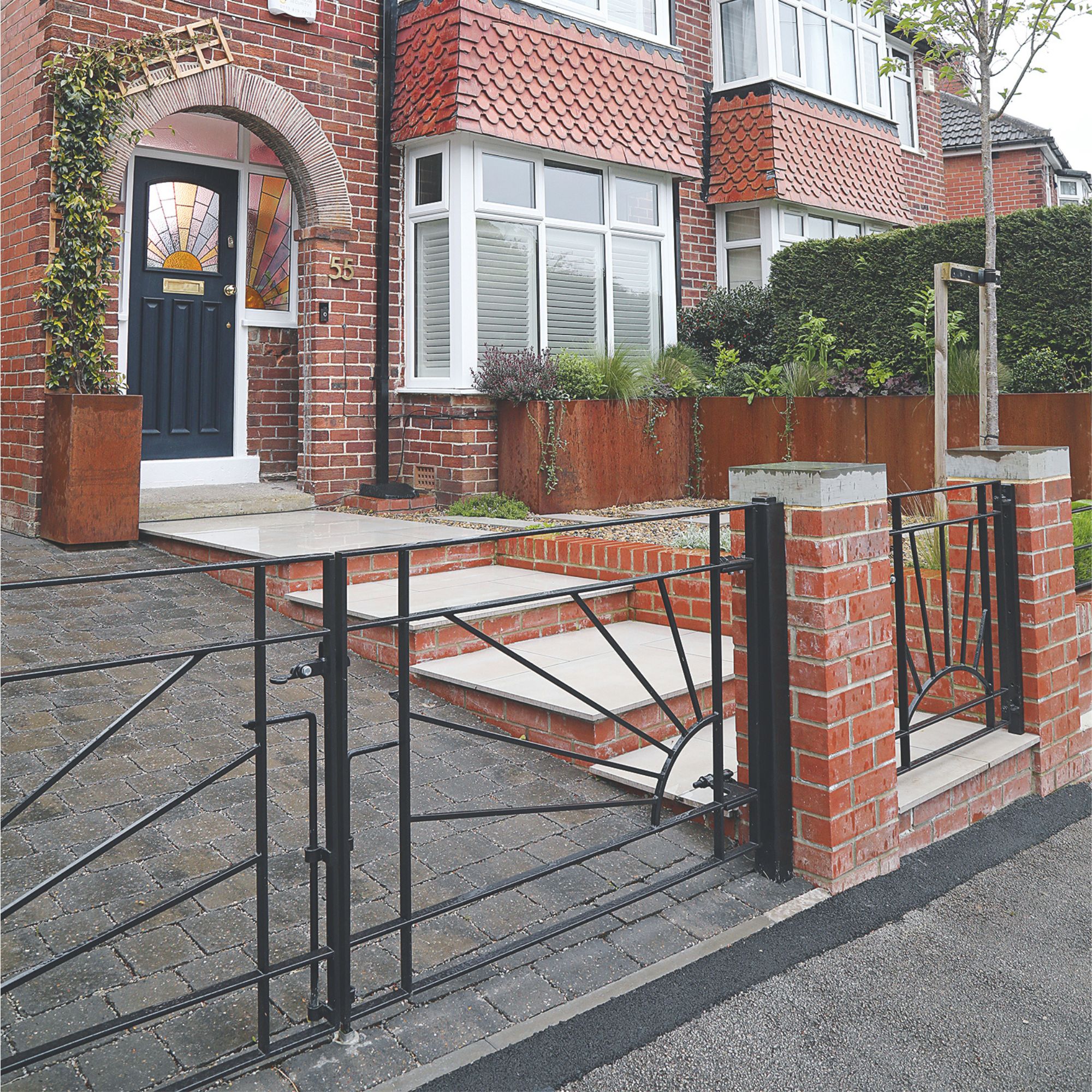
If you're lucky enough to have a driveway, it's crucial to keep up with the maintenance. Give it a good cleaning with one of the best pressure washers, and if you have block paving, make sure to keep up with weeding it.
Johnny Pearce, co-director at Oltco, also suggests rethinking your driveway material. 'Creating a welcoming and visually appealing home exterior often involves introducing softer, more organic elements.'
'One effective way to achieve this is by designing curved pathways using resin-bound materials. Unlike rigid, straight pathways, curved designs add a natural flow to the landscape, breaking up harsh lines and creating a more inviting approach to the home.'
Or, if that's not your style, garden designer Charlotte Rowe says you should aim to create a front garden or approach which not only complements your architecture but also respects your neighbours.
Limestone, Portland or Yorkstone and traditional encaustic tiles are perennials for paths often complemented by gravel in tones chosen to echo the facade of a property.
14. Maintain your trees

Nothing elevates a home's kerb appeal quite like a few well-maintained trees. They frame your home, helping to soften architectural lines and add height and texture.
Whether it's a neatly clipped bay tree by the front door or a mature blossom tree on the front lawn, if they look tended to, it signals that the home beyond is cared for, too.
'Large trees can be off-putting as they block sunlight, which can significantly impact a home’s kerb appeal compared to brighter and airier properties,' explains Luke Saywell, partner at family estate agents Gascoines.
'Try to keep large trees well-maintained, and if they don’t serve a purpose, such as privacy, then consider removing them if they’re on your property,'
'Similarly, fruit trees can be considered unattractive if they are not well maintained, which can cause mouldy fruit to drop off and accumulate on the property grounds as well as the adjacent pavement and road.'
15. Save money by salvaging
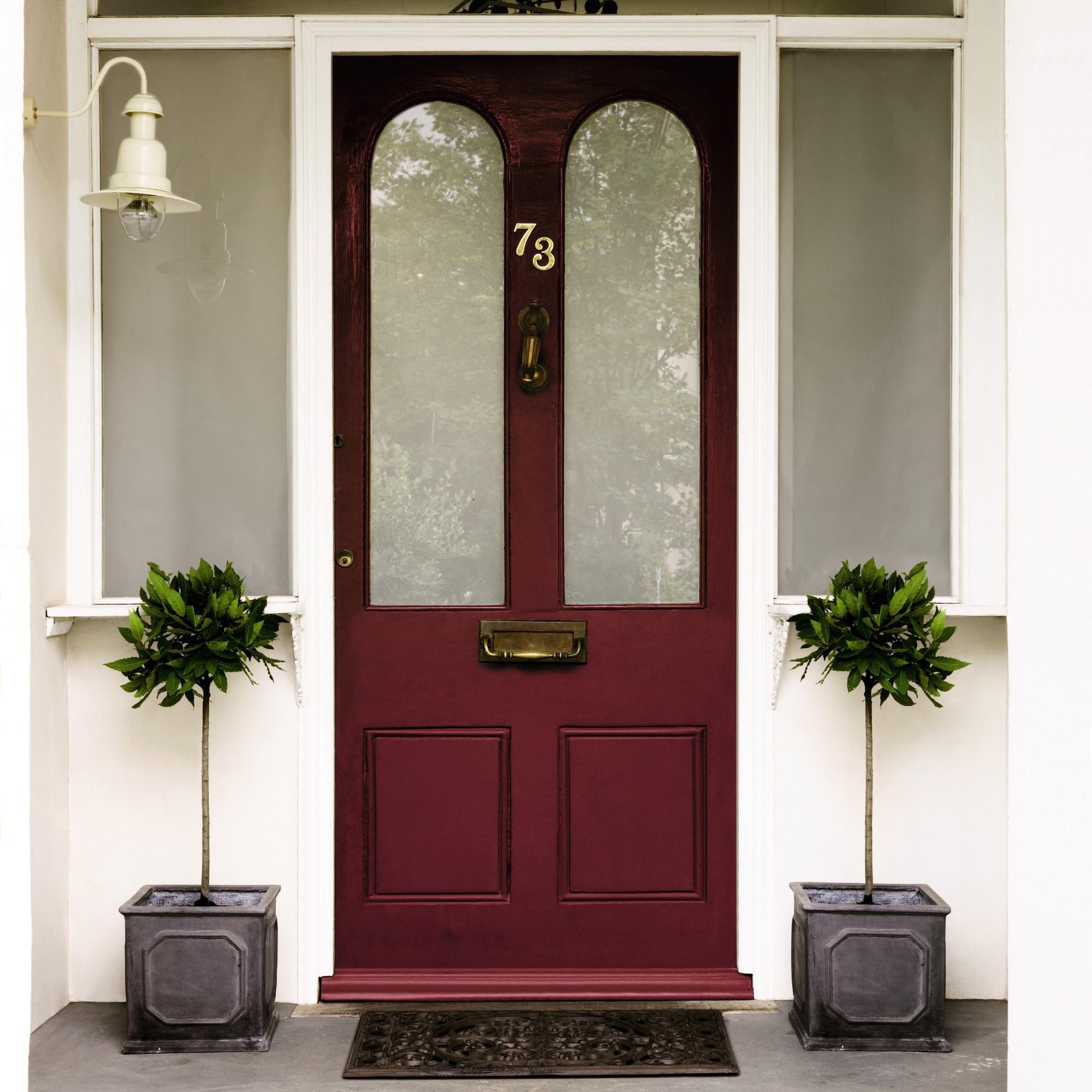
If you're not willing to part with original door hardware, for example, even if it's dull or rusty, your front door's existing door furniture may still be usable. Give it a boost by gently removing the rust from the metal with wire wool or a good rust removal kit like this rust remover bundle from Amazon before buffing the metal to a shine with a paste made from bicarbonate of soda mixed with a few drops of water.
If, after cleaning, the original door furniture - think door knobs, knockers and letter plates - is worth keeping, use these as your starting point when choosing replacements for pieces that are no longer looking their best.
If you have a period property with an original front door, or even a modern replica, finish it with door furniture from the correct era. Comb salvage yards for door features but ensure all the screws are in place, as they won't be made to today's standards.
FAQs
How to soften the front of a house?
'To soften the front of a house, consider adding greenery. Climbing plants like wisteria or ivy can break up harsh brickwork, and shrubs and flower beds add texture and warmth. Window boxes filled with flowers are also a nice addition, particularly to homes with a plain exterior,' explains Alena Walker, a property expert at Buzz Capital.
'Lighting can also help to soften the look of a house; warm white outdoor lighting along the path or around the door can create a welcoming ambiance. You could also try lantern-style wall lights or recessed lighting on steps to make the entrance feel more inviting, especially in the evening.'
'Additionally, if the property has a stark or boxy exterior, decorative elements like shutters, a trellis with climbing plants, or a small porch canopy can add depth and character.'

Alena Walker is a property-lending expert at Buzz Capital, a specialist property loan provider. With extensive experience in property financing, she understands how lenders assess risk, including the impact of external property features on valuations and mortgage approvals.
Since joining Buzz Capital in 2018, Alena has played a key role in underwriting, daily operations, marketing, and procedural oversight. As a Certified Practitioner in Specialist Property Finance, she is well-versed in the financial and aesthetic factors that contribute to a property’s marketability and value.
How to add kerb appeal to a flat-front house
'A flat-front house can benefit from added depth and contrast. If space allows, placing potted plants or small trees on either side of the front door creates visual interest, and a stylish doormat and house numbers can enhance the entrance,' says Alena.
'For homes with no garden, rail planters or window boxes are an easy way to introduce colour and life. Painting the front door in a striking colour can also help draw the eye, making the home feel more distinctive.'
'Another option is to update the front by incorporating textured elements such as wood, stone, or metal cladding. If permitted, installing a small canopy or awning over the entrance not only provides architectural charm but also offers practical benefits, shielding the doorway from rain and sun.'
'Choose a material that’ll complement the overall aesthetic of the building, such as wrought iron for a traditional look or glass and steel for a more modern touch.'
Interiors expert Liv Conlon, who runs The Property Stagers, adds, 'Sometimes, a flat or overly stark frontage can make it seem a bit too cold. For homeowners, the trick is to layer textures and add a few thoughtful details that soften the outside of a home.'
'For more modern properties, structured greenery can do the trick - such as a pair of bay trees in elegant planters, ornamental grasses, or even a smart olive tree near the entrance. These can all make a surprisingly big difference to the outside of your home.'
'Make the front door the star of the show. A bold colour - deep blue, forest green or even a rich plum - instantly adds personality. Then think about greenery.'
'If your house has a long, flat frontage, use contrasting textures - iron railings, painted masonry, or a small section of timber cladding - to break it up.'
Is there an app to change the exterior of a house?
'There are several visualiser apps and websites that let you upload a photo of your home and experiment with changes to the exterior. Popular options include the Dulux Visualiser, ProVia Visualiser, and Hover Visualiser,' says Dave Sayce, from Compare My Move.
'Each tool offers different features; some may let you change paint colours, doors, or cladding, while others focus more on structural changes. Keep in mind that some may charge a fee or require an account, so it’s worth doing a bit of research to find the one that best suits your needs.'
'The Dulux Visualiser and Valspar Virtual Painter apps let you see different colours on your house in real time using the camera on your phone,' adds interiors expert Liv. 'For bigger changes, Planner 5D and Home Design 3D allow you to visualise a full makeover - everything from new cladding to adding a porch.'
So there you have it: lots of ways to add kerb appeal to your home, whether you're selling or not.
If you are looking to put your home on the market, these are the areas you will need to declutter before you do that and some great homestaging ideas to get your interior ready for viewings and sell it faster.

Jenny is Senior Digital Editor and joined the team in 2021, working across Ideal Home, Real Homes, Homes & Gardens, Livingetc and Gardeningetc. Since getting on the property ladder, her passion for interior design and gardening has taken on a new lease of life. She loves collecting and salvaging unique items (much to her other half's despair) but sniffing out stylish home bargains is her one true love.
